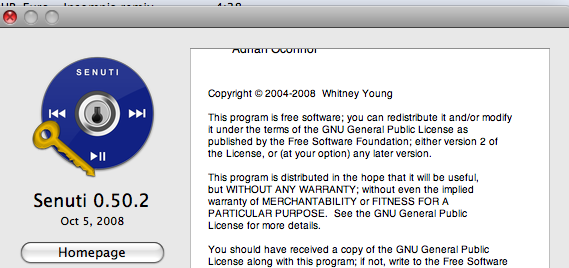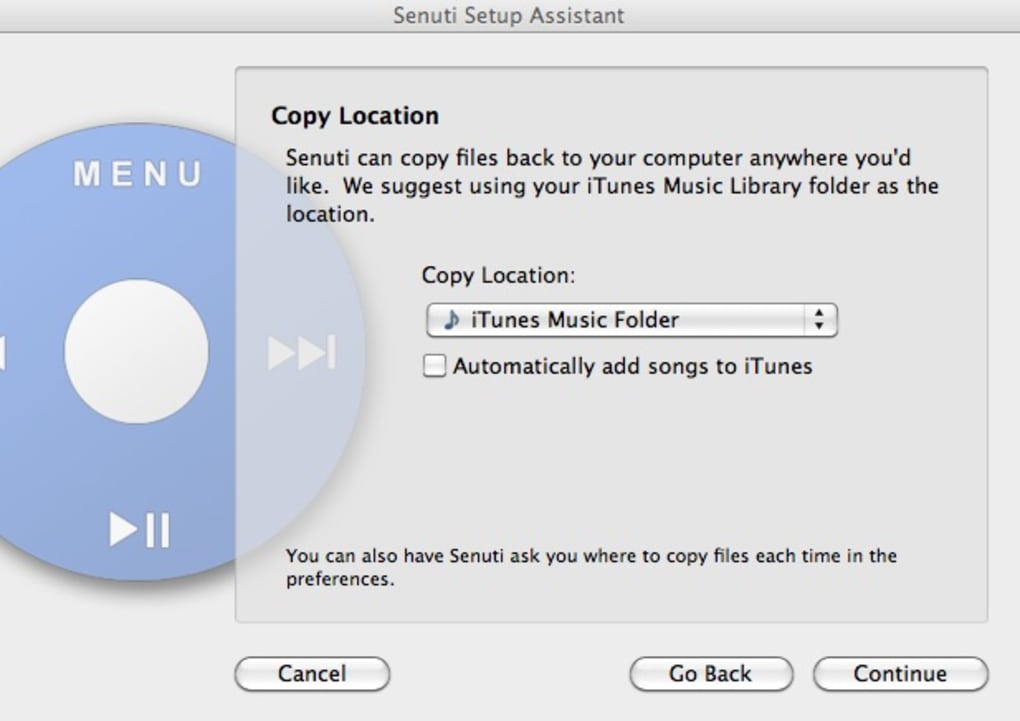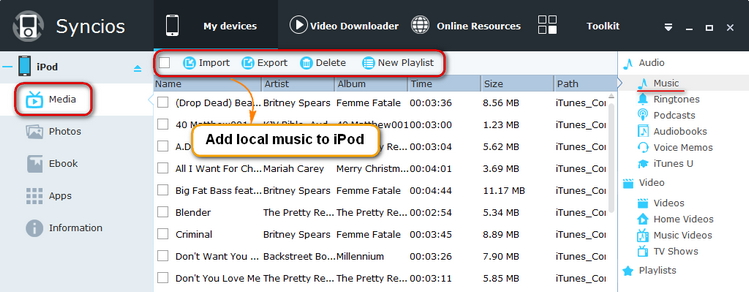

- Senuti for window how to#
- Senuti for window mac os#
- Senuti for window pdf#
- Senuti for window code#
- Senuti for window download#
Once you’ve downloaded TinkerTool, follow these steps: My favorite tool for this job is Marcel Bresink’s free TinkerTool.
Senuti for window download#
Macintosh The Mac doesn’t include a utility for making invisible files visible so you must download one.
Senuti for window how to#
Here’s how to do this on either a Mac or a Windows PC. Once there, simply add that folder (and the music within) to iTunes by dragging the folder into iTunes’ main window or using the program’s Add to Library command (found in the File menu). Though fairly graceless, one of the easiest ways to recover your music from an iPod is to make the iPod’s music folder visible and then drag it over to your computer’s desktop. Therefore, the trick to getting the music off the iPod is accessing this invisible folder. The company’s engineers did so by doing nothing more than making the iPod’s music folder invisible.

Rather than dump millions of dollars into a complicated copy-protection scheme-which would almost immediately be broken by one of these wily 12-year-olds-the company did the wise thing and protected the iPod in such a way that honest folks wouldn’t be tempted to pilfer music off another’s iPod. When Apple designed the iPod’s copy-protection scheme it did so understanding one of the fundamental laws of this new millennium: That which can be locked will be unlocked (by a 12-year-old boy). When you double-click on an iPod mounted on a computer, you’ll find no folder within that holds the device’s music. But that remains the only Apple-blessed way to move music from the iPod to your computer. With iTunes 7, when you attach an iPod you own to a computer authorized with your Apple ID, iTunes will offer to copy protected content from the iPod to your computer. Ghostly protectionįor those who aren’t hip to the current state of affairs, I should explain that in order to deter music piracy, iTunes and the iPod were originally designed so that music would travel in one direction only-from the computer to the iPod. Those bad apples intent on stealing music will find a way to do it with or without my help. Given that I’m asked the question with such regularity, I’ve decided to point the way in the hope that it will help the virtuous among us. It’s no fun losing thousands of songs at a single bad stroke (and even less fun if a goodly portion of those songs were purchased from the iTunes Store). While there may be a few bad apples in this regard, more often than not I find people ask the question to find out how to recover music after their computer’s hard drive has crashed. The person asking the question may wish to learn the secret of copying music from the iPod in order to pirate music. The difficulty in answering such a question is that it may be born of less-than-honorable intent. When you’re in the business of writing about the iPod for fun and profit, the question most often thrown your way is: “How do I get my music off the iPod and onto my computer?” In this excerpt, senior editor Christopher Breen looks at moving copies of your music from an iPod to your computer. This new edition, updated for iTunes 7 and Windows compatibility, shows you how to import music from CDs, cassette tapes, and LPs, organize and manage your music files, convert DVDs for playback on a video iPod, and more.
Senuti for window pdf#
The older, GPL version of this software is still available online.Method I | The Apple Way Simple ways to copy music on an iPod back to a computer's hard driveĮditor’s Note: The following article is excerpted from the second edition of the Macworld iPod and iTunes Superguide, a 78-page, $12.95 PDF with the very best iPod and iTunes information from the experts at Macworld and Playlist.
Senuti for window code#
The code following the 0.50.2 release was changed to payware in February 2009, although publications such as Wired still referred to the product as Open Source code as late as April 2009. Senuti was originally released as GNU GPL software. Senuti is now sold by a software company called FadingRed, of which Young is co-founder and lead developer. He leveraged the developers in the open-source community to help him write the code. Upon realizing that a good solution did not exist, Whitney wrote one. Senuti was developed by Whitney Young, who started as a high school senior searching for a way to transfer music from his iPod onto a Mac computer.

The unlimited version is available for around US$20. It can be downloaded as a free demo, which allows the user to transfer 1,000 songs from an iPod.
Senuti for window mac os#
It is a Mac OS X-exclusive application no version of Senuti has been released for Microsoft Windows. Senuti is an application for transferring files, such as songs and videos, from an iPod or iPhone back to a Macintosh computer.


 0 kommentar(er)
0 kommentar(er)
